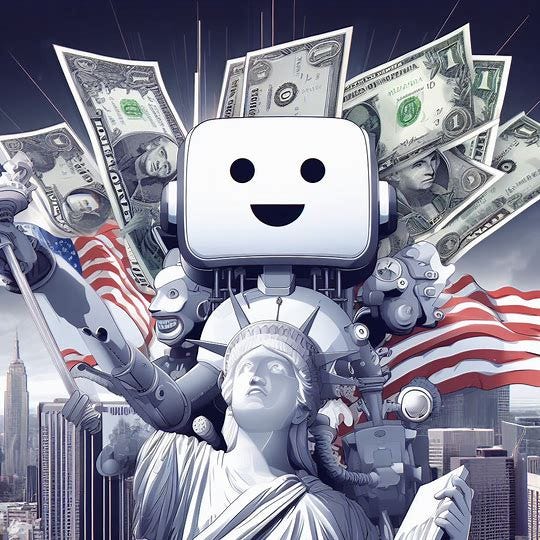Top 5 reasons why OpenAI was probably never really worth $86 billion
The real value was always the people, not the IP, not the data, not the customer list, not the infrastructure. Elon Musk’s Grok replicated much (not all) of what OpenAI had done in a few months; Kai-Fu Lee’s new company similarly was able to replicate a lot in less than a year. Others may have as well. As a famous essay apparently from Google said, there is no moat. Even if you figure that 750 engineers are worth $10 million each, that only gets you to $7.5b, not $86B. (And if the OpenAI staff leaves, nobody will offer much for what’s left over.)
There has never been a solution to the hallucination problem, and it’s not clear that there will be until we find a new paradigm, as Altman himself partly acknowledged last week, when he did his best Gary Marcus impression. (I hope that’s what got him fired…) OpenAI might find that new paradigm some day, but someone else (e.g., DeepMind or Anthropic) might well get there first. OpenAI’s strength has been in scaling up an existing paradigm (Transformers) that was developed elsewhere (Google), not developing new paradigms.
There’s still no clear business model, and systems like GPT-4 still cost a lot to run. A billion or two in revenue this year is impressive, but it’s not clear how much of that is profit, and a lot of companies spent money testing LLMs but few were actually using the LLMs in production. That income is mostly ‘proof of concept” testing, but that income could dry up. It’s still all very speculative.
The whole nonprofit-hybrid model, introduced in 2019 (the company was originally pure non-profit) was always a ticking time bomb, because the people trying to make money were never going to have a perfect relationship with those in the nonprofit that were charged with keeping the world safe. Safety and financial return were always going to be in tension. In hindsight, the recent drama was an accident waiting to happen. They may yet get past it, but the tension at the middle would likely remain, always weakening the value of the company as a pure business play. The fact that the prospectus warned that the whole thing should be viewed “as a donation” doesn’t seem to have much deterred the investors, but it should have.
Large language models alone were never going to solve the alignment problem. I’ve been saying that all along, because of their limits in reliability, factuality, and reasoning, but new papers come out every week or two that keep making that point sharper. Melanie Mitchell and collaborators just put out an excellent paper on reasoning last week (that got lost in the shuffle), concluding “Our results support the hypothesis that GPT-4, perhaps the most capable “general” LLM currently available, is still not able to robustly form abstractions and reason about basic core-concepts in contexts not previously seen in its training data.” Without reliable reasoning, how can you get to alignment? Or even reliable software with anything like formal guarantees? Another paper just posted found that “large language models struggle at meeting fine-grained hard constraints”; good luck meeting the OpenAI mission of being good for humanity if you can’t meet the hard constraint of “be kind to humans.” Sooner or later, to make good on its mission, OpenAI was going to have to switch from LLMs (which maybe might make money) to other more pro-social technology that might make less. They never really seemed ready to pursue that, but again, there was always a looming reality that they weren’t facing.
So, you have a company with no obvious moat, modest revenue (relative to the valuation), and a sky high valuation (which would have valued OpenAI as worth more than more established companies like FedEx, AirBnB, and Colgate-Palmolive), all built on promise. That promise always seemed to me not to be realistic.. And the overriding nonprofit mission was always going to be at odds with a pure for profit play.
Of course after all the drama, the company that was reportedly about to invest at a reported $86 billion valuation, Thrive Capital, and its own investors, like CalPERS (the California pension system which is believed to have financed Thrive in part) probably now won’t.
They may have just dodged a bullet.
Gary Marcus has split the last decade between working in industry, researching AI, and thinking about what it all means for future of humanity.


Lucid and sound. And again I’ll point to the idea/expression fallacy as a strong point for the unwitting and unwilling suppliers of professional expressive content to the models. Author class action lawsuit #5 today (unless I’ve missed any) adds the non-fiction writers to the claimants of those proposed billions.
Not even Big 4 consultancy fever projections of gen-AI total market value comes anywhere close to the value of total misappropriated intellectual property, meaning that this is a value *transfer* scheme, not value creation.
Thank you for a nice summary, Gary!
I feel like this is a sign the DL field is finally feeling the forcing function of hard financial requirements on compute, and learning that it will indeed have to consider other approaches in addition to DL, if it wants to stay in business at all.